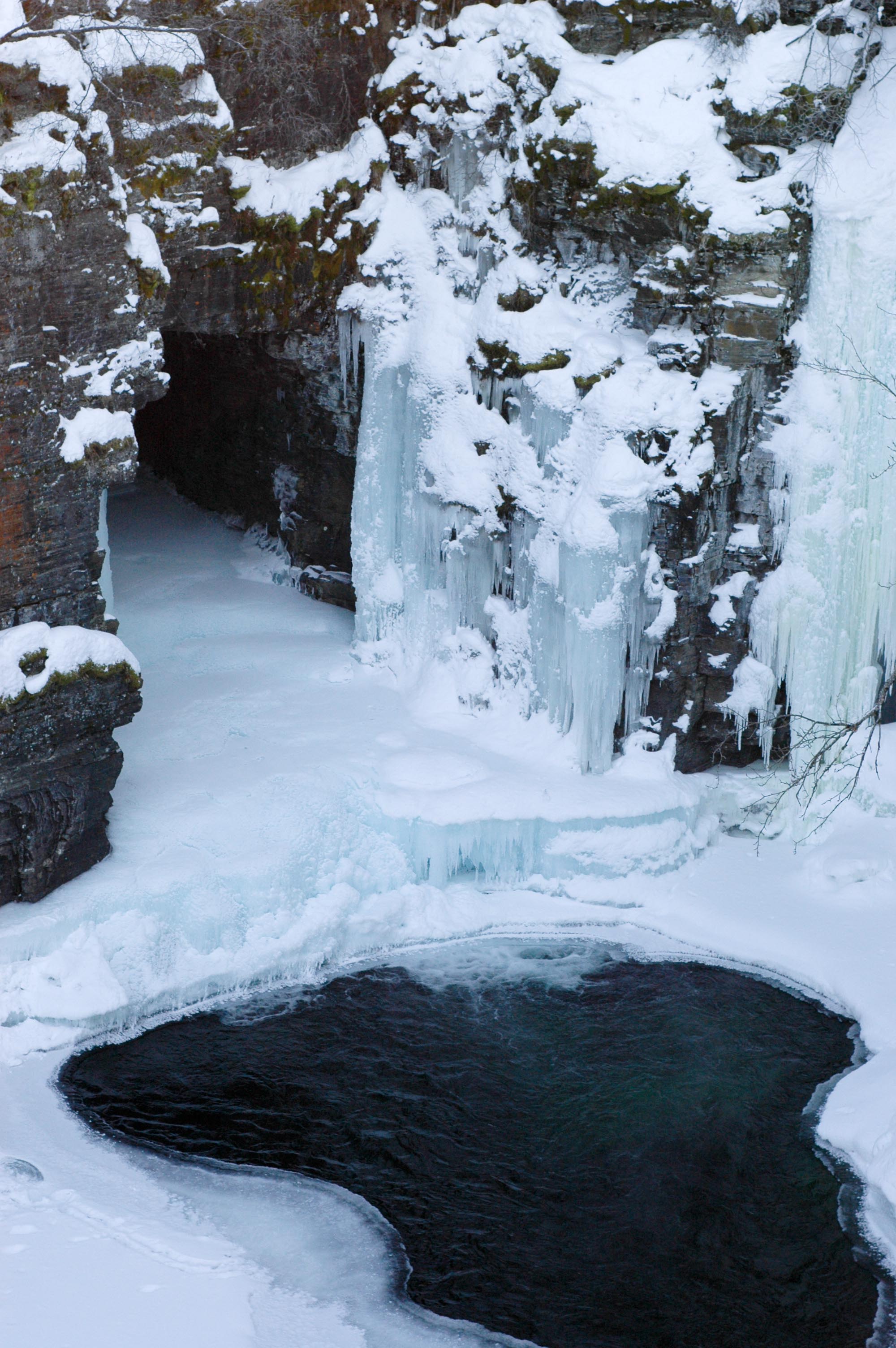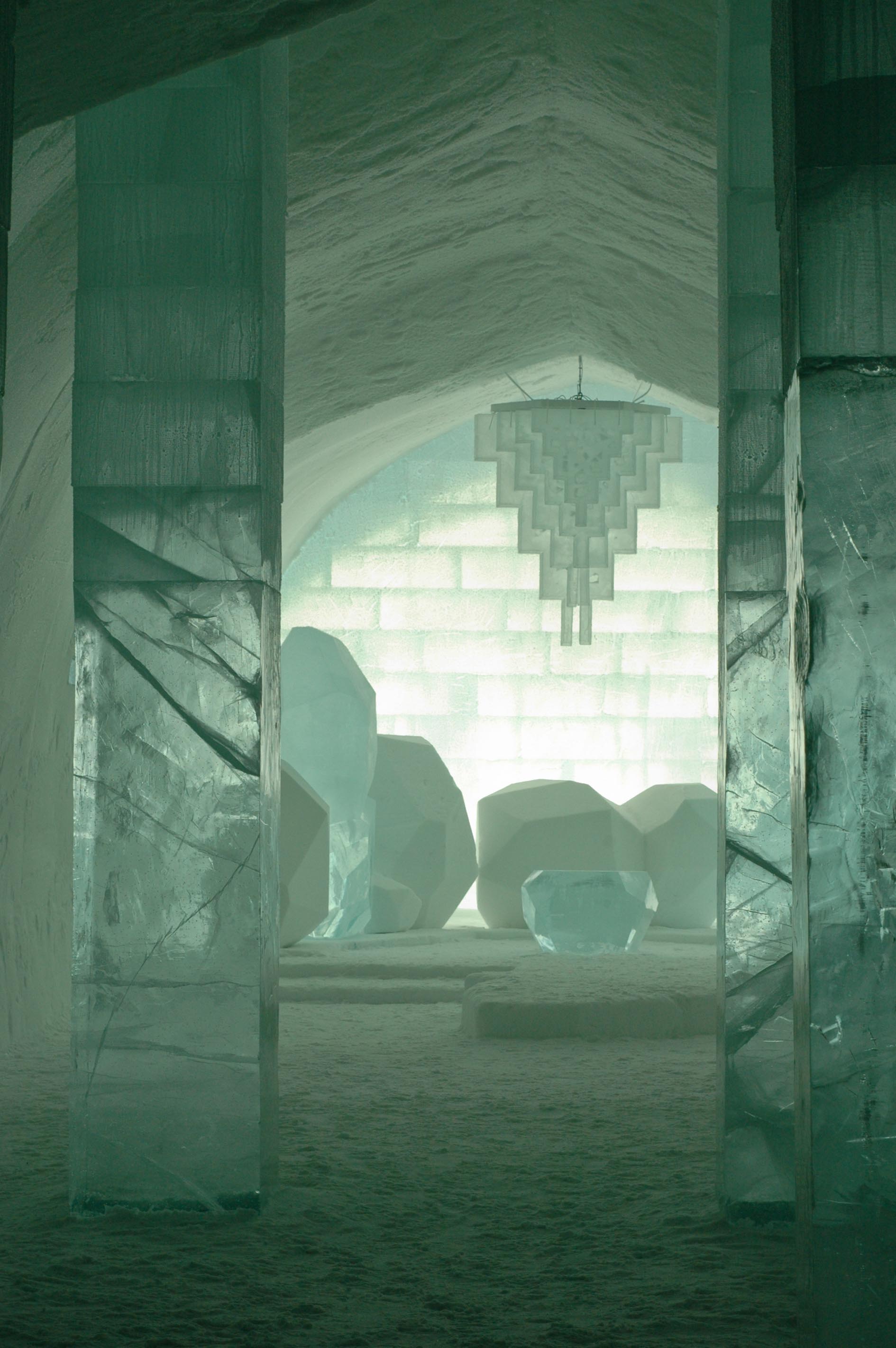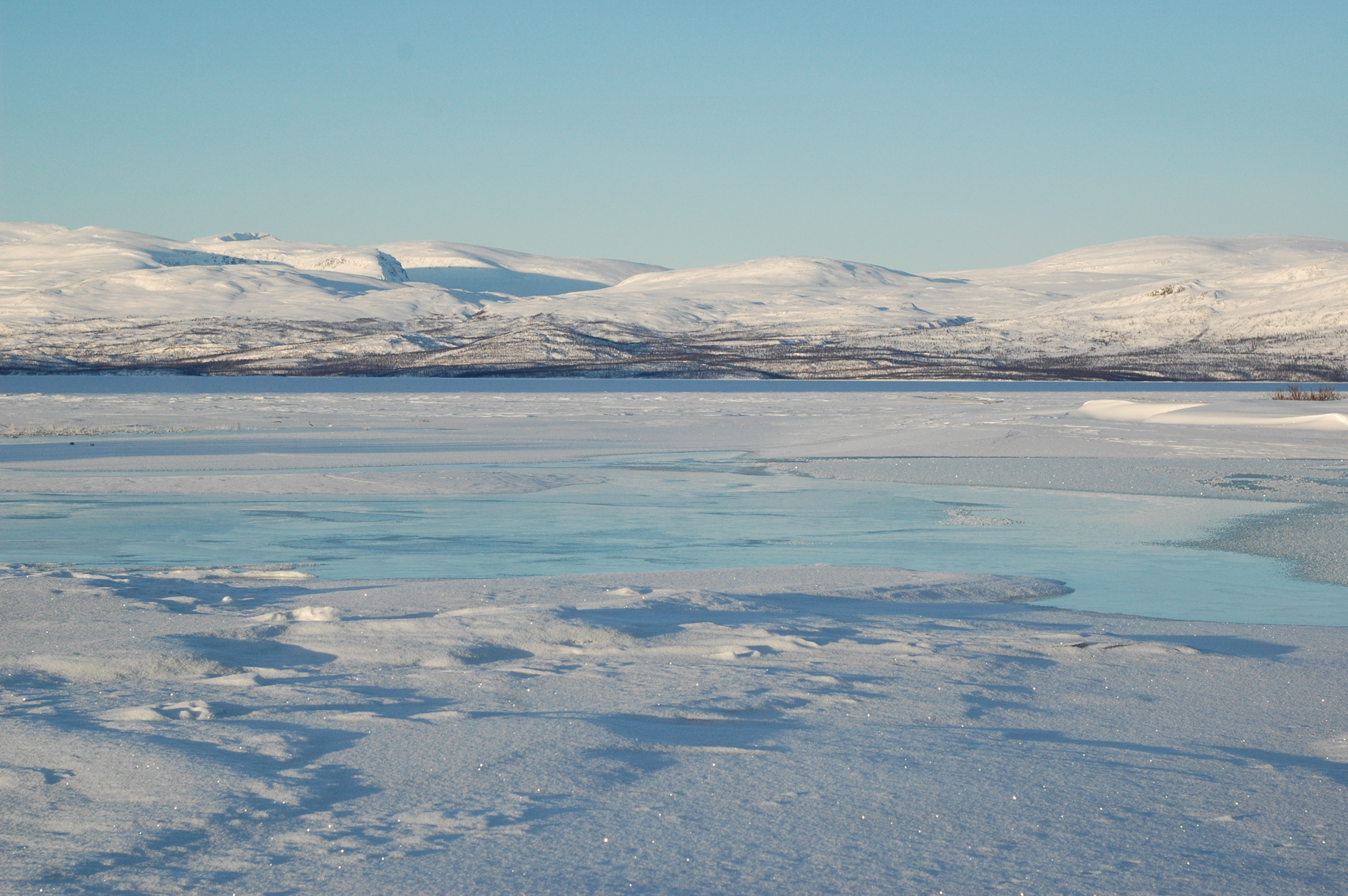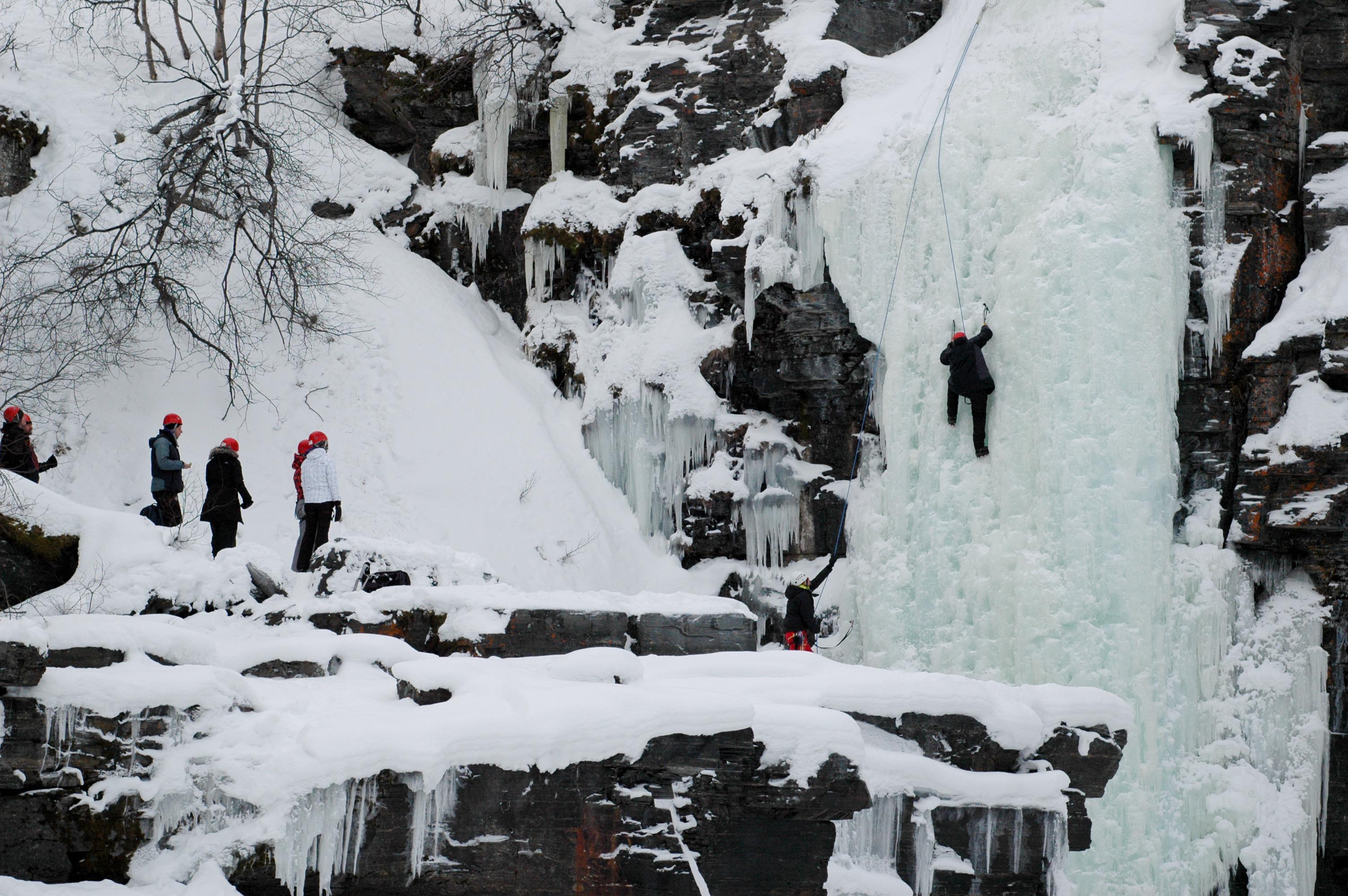Abisko is one of the most popular winter destinations in northern Sweden but we found the local information sorely lacking when it came to the basics. The vast majority of travelers were on a package tour, but Abisko can be easily visited on your own without a guidebook if you have a little bit of advice. This is intended to be practical information to help you plan your own trip and is information we wish someone had told us before going. It’s truly a unique and fantastic destination, so we hope it’s helpful to you!
Getting There
 Even though the village is 200 km above the Arctic Circle, it’s quite easy to reach Abisko. Your options include flying to Kiruna and taking a train 1.5 hours, or simply riding an overnight train directly from Stockholm. Trains leave nightly from the central station, they are punctual (even during heavy snows!), comfortable, and it’s a lovely journey through picturesque winter landscape. The cost for a bed in a 6-berth compartment is actually cheaper than a hotel room. Private compartments are also available. The train leaves Stockholm around 6:00 PM and arrives in the early afternoon the next day.
Even though the village is 200 km above the Arctic Circle, it’s quite easy to reach Abisko. Your options include flying to Kiruna and taking a train 1.5 hours, or simply riding an overnight train directly from Stockholm. Trains leave nightly from the central station, they are punctual (even during heavy snows!), comfortable, and it’s a lovely journey through picturesque winter landscape. The cost for a bed in a 6-berth compartment is actually cheaper than a hotel room. Private compartments are also available. The train leaves Stockholm around 6:00 PM and arrives in the early afternoon the next day.
Where to Stay
There are three main lodging options. The first two are located near the Abisko Ostra (East) train stop and the third is near the Abisko Tourist Station train stop about 2 km down the tracks. You have to know which stop you’re using because there are no signs or information on the platforms and if you get off at the wrong stop you won’t find any taxis or busses so you’ll have to hoof it or hitch a ride on the seldom-used road. All three lodging options have saunas, are walking distance from the lake and all of them will be happy to book activities.
Abisko Mountain Lodge (Abisko Ostra Station) – In spite of the name it’s not on a mountain and there are no views, but this is a really nice option with a comfortable common area, and delicious food. Breakfast included.
Abisko.net (Abisko Ostra Station)– It’s the name of a hostel, not just a website. This place has uncomfortable lounges, no views and a musty odor. This would be the option of last resort.
Abisko Turiststation STF (Abisko Tourist Station) – This is where most people stay. It’s a large complex near the Kings Trail and sky station/ski area, it has a variety of lodging options from small cabins to private rooms but most are small rooms with a bunk bed, sink and shared bath. The big upsides are the kitchen facilities where you can cook your own food and huge picture windows with outstanding views of the national park. Sheets are an extra $16 so bring your own. You’ll also be expected to clean your own room (I’m not joking about this).
Budget
If you’re on a budget don’t go. Abisko (like most of Sweden) is shockingly expensive. As a rule of thumb, take how much you think something should cost and multiply it by four. Even the Brits were complaining about how expensive things were, and that’s saying something. One couple from the UK told us it was cheaper to buy snowshoes and boots at home rather than rent them for a single afternoon. Lodging options are obscenely overpriced and we’ve never paid so much for so little. Expect to pay around $85/night for a really basic private room, $200/nite for a nice room with private bath, $15 for breakfast and $50-100 for dinner. There is a decent grocery store in the village if you plan to cook for yourself.
Activities
There’s plenty to keep you occupied for several days, but be prepared to pay through the nose if you take part in a guided activity. Here are some of the more popular options:
The Northern Lights – odds are, this is the main reason you’re headed to Abisko. You’re almost guaranteed to see them in a typical 3-night stay. Don’t bother with a guided “northern lights walk” because this is a total waste of money. The viewing is spectacular just outside your door. Abisko is a tiny town and there is very little light pollution.
Aurora Sky Station – take the chairlift up a mountain for northern lights viewing. The Sky Station has a cozy indoor lounge when it’s very cold or if the weather doesn’t cooperate. Space is limited and usually booked out by tour groups, so reserve well in advance. No refunds if it’s cloudy, so our advice would be to pass on this.
Dog Sledding – learn the basics of handling your own team on one of the many trails in the national park.
Ice Climbing – tap your inner Spider Man and scale a frozen waterfall a short distance from the Tourist Station
Hiking – Explore the fantastic little canyon near the Tourist Station or the Kings Trail system which connects hundreds of miles of arctic wilderness that is chock full of moose tracks, mountains, frozen rivers and forest. You can cross country ski & snowshoe these trails but we found it easy enough to simply walk in our boots. You can also hut-to-hut camp but this should only be attempted if you have winter backcountry experience or a guide. Expect temps below zero F (-20 C).
Ice Fishing – guides drill a hole in the ice and you can fish for arctic char. Fun or freezing, you decide.
Sami Village – these examples of traditional native homes are a short walk from the Tourist Station train stop and worth a 20-minute visit. Better yet, they’re free.
Skiing – the lift that serves the Sky Station also serves the ski slopes, but thin snowpack (Abisko is in a rain shadow) means you’d better bring your rock skis.
Inhospitable Climate = Inhospitable People
OK, Swedes have a reputation for being cold fish, and we’re not the kind of people to get our panties in a bunch when someone isn’t nice to us. But roughly half of the locals seemed to go out of their way to be unfriendly. Just one example of this: we spotted a large moose just off the path on our first day. Now, most people would think this was pretty cool (I mean, some places sell moose safaris for Christ sake!) but when a guy strolled by a few minutes later, Amanda pointed it out to him, he sneered, “Yeah I know I live here.” She was simply being kind, and we both felt his response was totally uncalled for. Abisko residents may be fine with gouging you with high prices, but don’t expect them to roll out the red carpet when you arrive!
Visiting the Icehotel
 The distance from Abisko to the Icehotel isn’t very far as the crow flies, and we thought we could make a day trip out of it, but because of the way the train/bus schedules work out, it’s pretty hard to do unless you hire private transportation (cha-ching!). Your best bet is to spend at least one night in Kiruna on your way to or from Abisko and riding 30 minutes on the public bus from there. Better yet, try to stay in one of the cabins or lodges near the village of Jukkasjärvi (where the hotel is located) as this area is incredibly beautiful and full of interesting native Sami culture.
The distance from Abisko to the Icehotel isn’t very far as the crow flies, and we thought we could make a day trip out of it, but because of the way the train/bus schedules work out, it’s pretty hard to do unless you hire private transportation (cha-ching!). Your best bet is to spend at least one night in Kiruna on your way to or from Abisko and riding 30 minutes on the public bus from there. Better yet, try to stay in one of the cabins or lodges near the village of Jukkasjärvi (where the hotel is located) as this area is incredibly beautiful and full of interesting native Sami culture.

